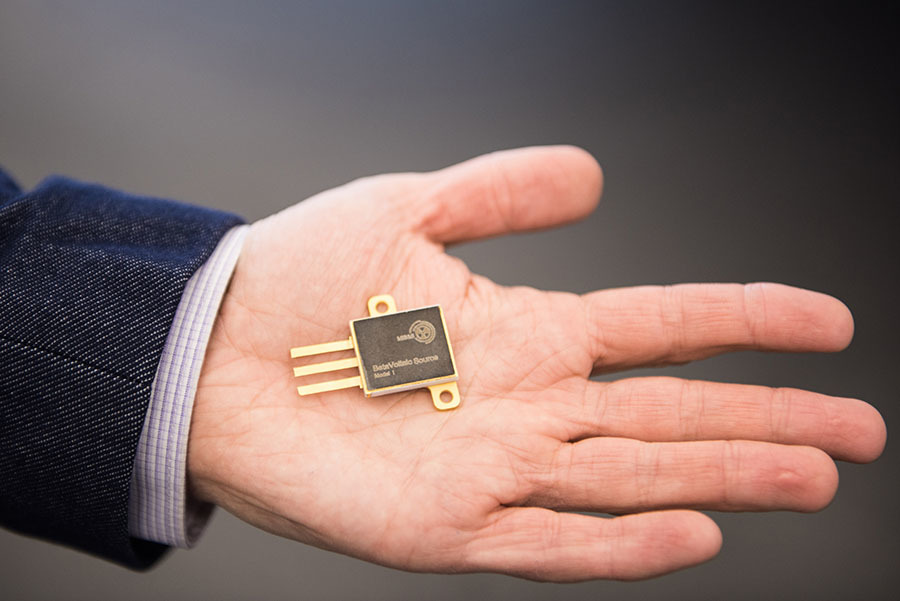Scientists from the National Research Technological University "MISiS" presented a compact atomic battery, which is ten times more powerful and half the price of existing analogues. This was reported by the press service of the university. The development is described in the scientific journal Applied Radiation and Isotopes.
The new battery converts the energy of radioactive decay into electrical energy and can be used to power microelectronic equipment. It belongs to the so-called beta-voltaic elements. Such a battery consists of two parts: semiconductors - energy converters and a radioactive emitter element.
Researchers have developed a special design (microchannel 3D structure) of an atomic battery in which the location of a radioactive element (nickel isotope) prevents the loss of power caused by reverse current.
- New Russian atomic battery has become ten times more powerful and half the price of analogues
- © NUST MISIS
The effective area of conversion of beta radiation into electrical energy in comparison with analogs has increased 14 times, which resulted in an overall increase in current. Among other advantages, the developers note the simplification of the technology for manufacturing a nuclear battery, which halves the cost of its production.
"The design allows an order of magnitude to increase the efficiency of converting the energy released during the decay of a beta-radiation source into electricity, which in the future will reduce the cost of the source by about 50% due to the rational use of an expensive radioisotope," said one of the authors of the development, Sergey Legotin, associate professor of the department semiconductor electronics and physics of semiconductors MISiS.
The use of such a battery is possible only in special microelectronic devices, including devices operating under critical conditions in space, under water or in the mountains, the researchers note. For example, as an emergency power supply for small sensors.
Despite the relative safety for humans and the ability to work up to 20 years or more, atomic batteries have not yet found use in everyday life due to the high cost of production.
“In theory, the use of low-energy sources of beta radiation in some household devices is possible. But it is very, very expensive and difficult. A lot of radioactive material will be required, the batteries will begin to be opened, and these are already issues of safety of production, use and processing, ”Sergei Legotin said in a conversation with RT.
At the moment, the development of MISiS is undergoing international patenting, and the university itself is recognized by foreign experts as "one of the key players in the global betavoltaic batteries market," the university press service notes. Taking into account the improved characteristics, the Russian nuclear battery will be able to occupy a significant share of this market, the researchers are sure.

